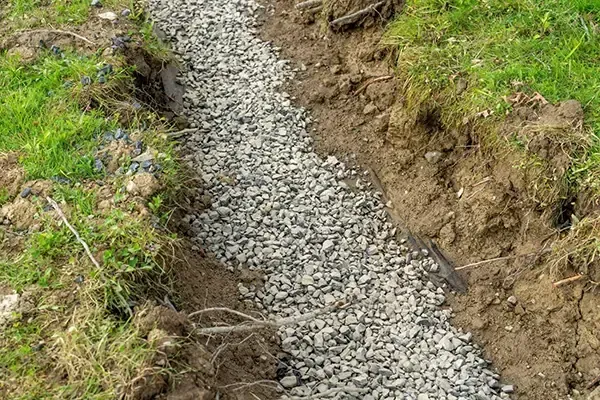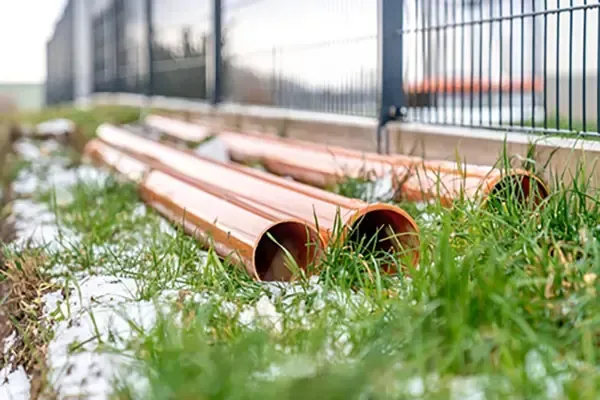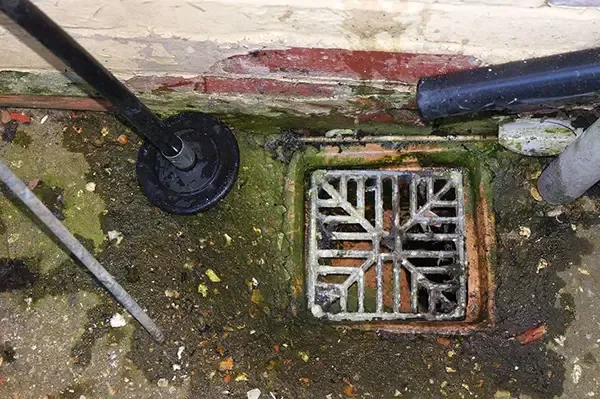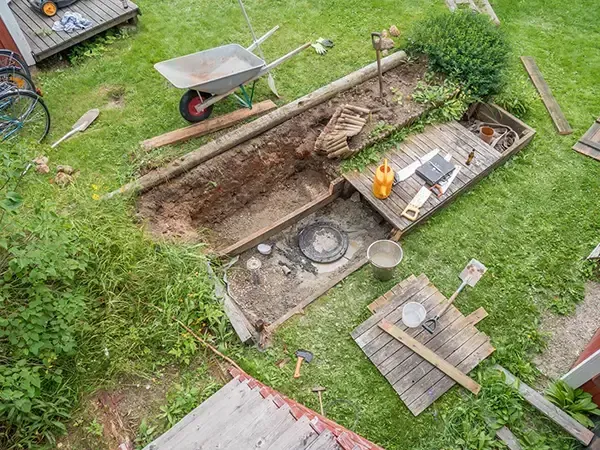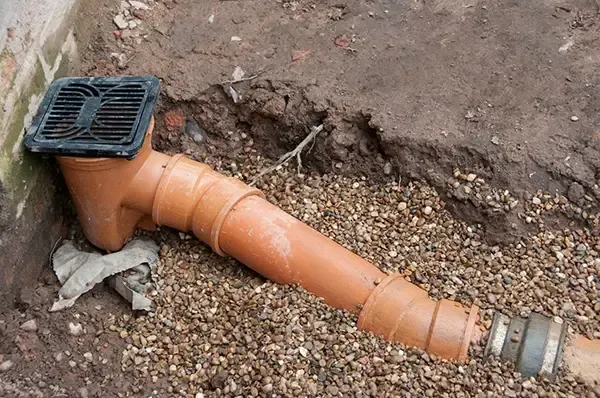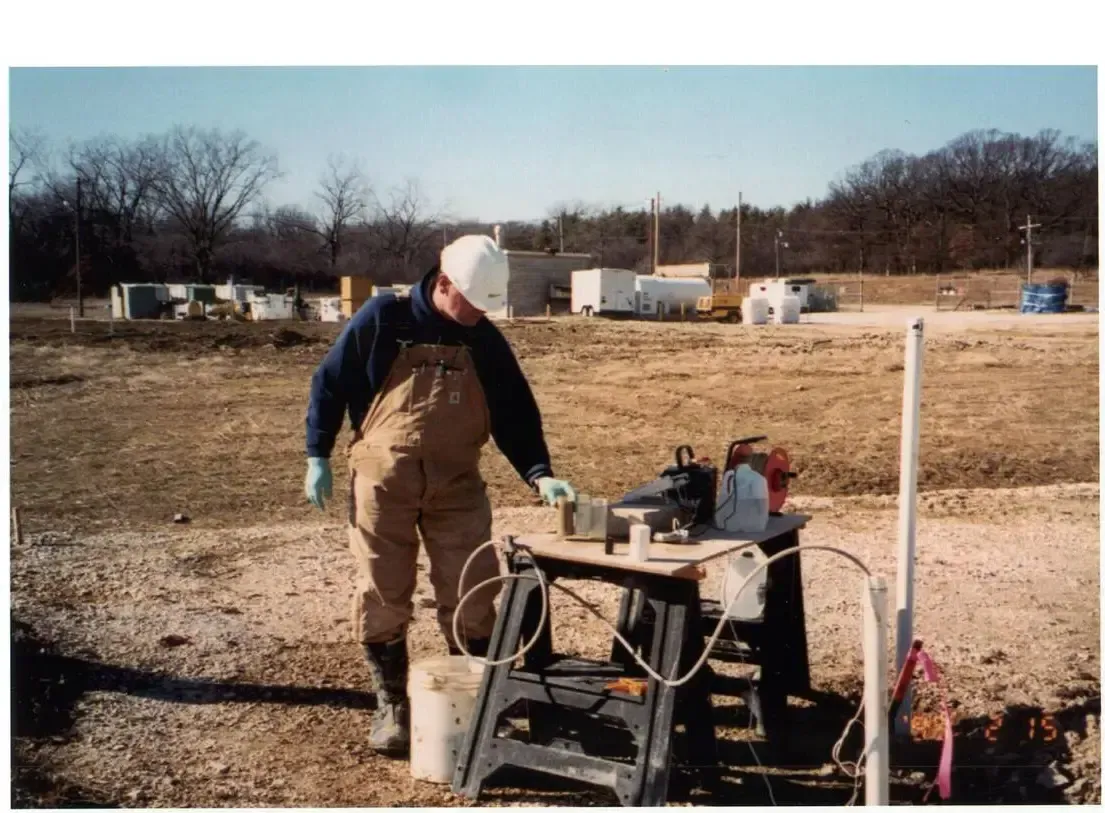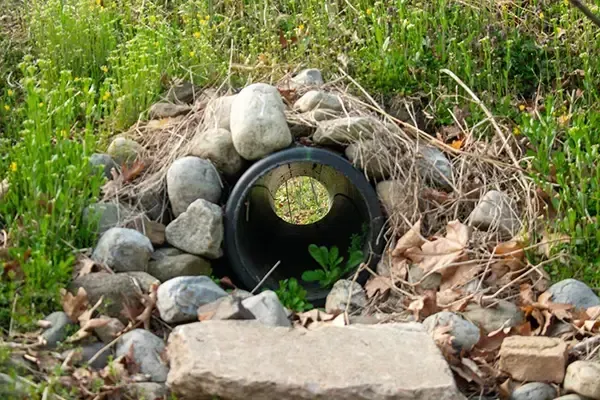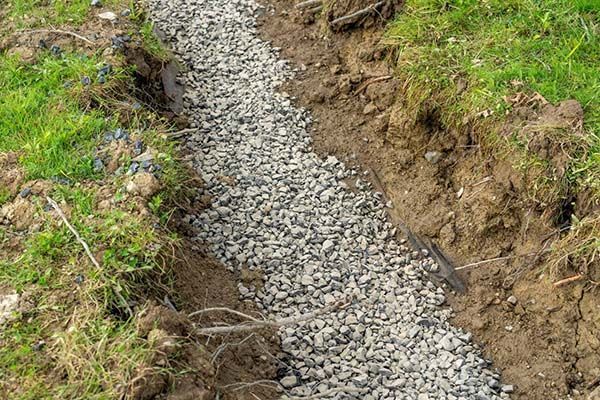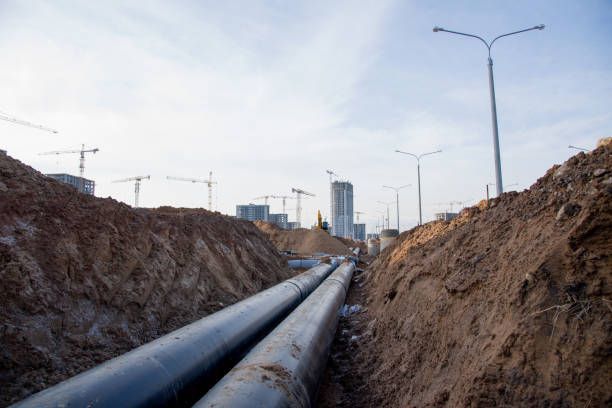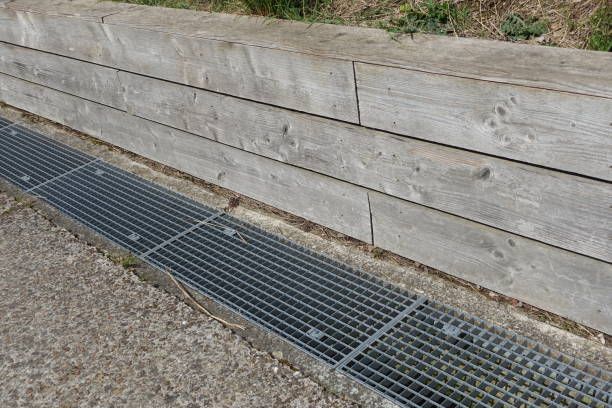How to Maintain Your French Drain After Installation
Proper maintenance of your French drain is crucial to ensure its long-term effectiveness.
Regular inspections at least twice yearly allow you to identify potential problems early on.
Keeping the surface and inlet areas clear of debris is essential to avoid blockages hindering drainage performance.
However, maintenance goes beyond just debris removal; being aware of how vegetation and other environmental factors impact your system is key.
Considering these considerations, it’s essential to recognize the signs that your French drain may need immediate attention.
Regular Inspections
Regular inspections are essential to ensure the continued effectiveness of your French drain system.
Key Inspection Points:
Water Flow Observation:
- Observe water flow: During and after rainfall, observe how water flows across the property and into the French drain system.
- Check for pooling: Look for any areas of water pooling or standing water, which may indicate a blockage or drainage issue.
Visual Inspection of the Drain:
- Access Points: Inspect access points and grates for signs of damage, obstruction, or misalignment.
- Visible Sections: Inspect any exposed sections of the drain for signs of cracks, leaks, or erosion.
Surrounding Area Inspection:
- Erosion Control: Check for signs of soil erosion around the drain line.
- Vegetation Growth: Excessive vegetation growth around the drain can obstruct water flow.
- Debris Accumulation: Inspect for any accumulation of debris, such as leaves, twigs, and sediment, in the drain line or surrounding areas.
Check for Unusual Signs:
- Musty Odors: Unusual odors emanating from the drain area may indicate a blockage or a problem with the drainage system.
- Increased Vegetation: Unusually lush vegetation growth in the vicinity of the drain may indicate excessive moisture and potential drainage issues.
By conducting regular inspections and addressing any issues promptly, you can ensure the long-term effectiveness and longevity of your French drain system, protecting your property from water damage and maintaining a healthy and dry environment.
Cleaning and Clearing
Keeping your French drain clean is crucial for its effective function. Here's a breakdown of key cleaning and clearing practices:
Debris Removal:
- Regular Inspection: Regularly inspect the area around the drain for debris such as leaves, twigs, soil, and other obstructions.
- Manual Removal: Remove any visible debris from the drain's surface using a rake, shovel, or broom.
- Grate Cleaning: If your drain has a grate, remove and clean it thoroughly to remove accumulated debris.
Flushing the Drain:
- Hose Down: Use a garden hose to flush out the drain, dislodging any loose debris or sediment.
- Pressure Washing (Optional): For more stubborn clogs, consider using a pressure washer with a low-pressure nozzle.
- Caution: Use caution when using a pressure washer to avoid damaging the drain pipes.
Addressing Clogs:
- Minor Clogs: For minor clogs, a garden hose or a simple drain snake may be sufficient.
- Stubborn Clogs: For more stubborn clogs, you may need to use a specialized drain cleaning auger.
- Note: Renting or hiring a professional may be necessary for severe clogs.
Gravel Maintenance:
- Check Gravel Level: Inspect the gravel surrounding the drain. If it appears compacted or displaced, gently loosen it to ensure proper water flow.
- Add Gravel if Needed: If the gravel level has significantly decreased, add more gravel to maintain the appropriate depth.
Vegetation Control:
- Trim Overhanging Branches: Trim any overhanging branches or vegetation that may drop leaves or debris into the drain.
- Maintain Clear Access: Keep the area around the drain clear of any obstructions that could hinder access for future maintenance.
By following these cleaning and clearing practices, you can ensure your French drain functions effectively, protecting your property from water damage and maintaining a healthy and dry environment.
Repairing Damage
When your French drain starts to show signs of damage, it's crucial to address the issue promptly to prevent further problems.
Identifying Damage:
- Visible Cracks: Look for cracks in the drain pipe itself.
- Erosion: Observe the area around the drain for signs of erosion, which can indicate a compromised pipe.
- Root Intrusion: Check for evidence of tree roots penetrating the drain pipe.
Repairing Minor Cracks:
- Sealants: For minor cracks, use a high-quality sealant specifically designed for drainage systems.
- Clean and Prepare: Thoroughly clean the area around the crack before applying the sealant.
- Follow Manufacturer Instructions: Apply the sealant according to the manufacturer's instructions and allow it to cure completely.
Replacing Damaged Sections:
- Excavation: Carefully excavate the damaged section of the drain.
- Pipe Replacement: Replace the damaged pipe with a new section of perforated pipe.
- Backfilling: Properly backfill the trench with gravel and soil, ensuring proper compaction.
Addressing Root Intrusion:
- Root Killer: Use a root killer specifically designed for drainage systems to eliminate tree roots that are obstructing the drain.
- Mechanical Removal: In some cases, mechanical removal of roots may be necessary.
Professional Assistance: For significant damage or complex repairs, consult with a qualified drainage contractor. They have the expertise and equipment to diagnose and repair the problem effectively.
By promptly addressing damage to your French drain, you can ensure its continued effectiveness, protect your property from water damage, and prevent costly repairs in the future.
Proper maintenance is crucial for ensuring the long-term effectiveness of your French drain system.
Regular inspections, thorough cleaning, and prompt repairs are essential to prevent blockages, erosion, and other issues that can compromise its functionality.
By diligently addressing these maintenance needs, you can protect your property from water damage, maintain a healthy and dry environment, and ensure that your French drain continues to provide effective drainage for years to come.
